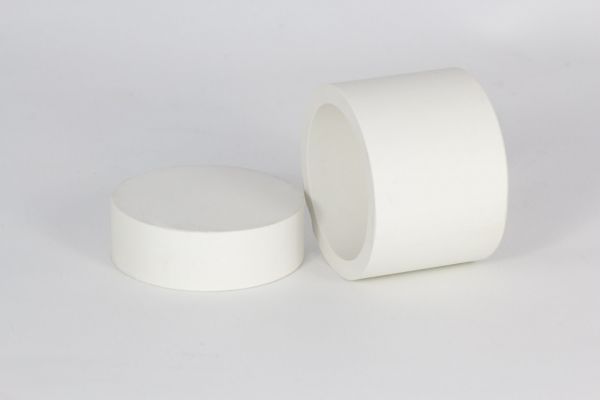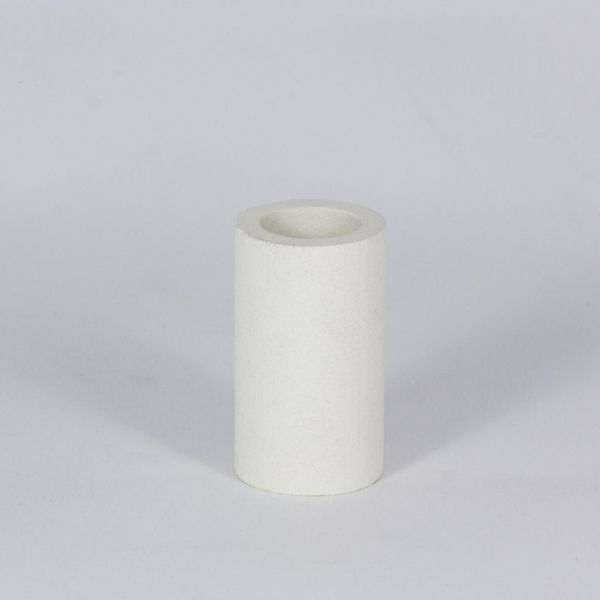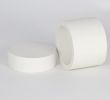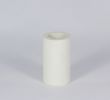Dense or porous mullite
Mullite is a refractory thermal ceramic. It is very rare in nature, so for industrial applications it is often produced artificially. Mullite ceramic has interesting thermal and mechanical properties. Its high melting temperature, resistance to oxidation and low coefficient of thermal expansion make it suitable for use in high-temperature applications and as a furnace component. Mullite contains silicon oxide and aluminium oxide in the following composition: alumina + silica (chemical formula 3Al2O3,2SiO2). It is available in dense (C610) or porous (C530) form.

The properties of mullite
The mineral mullite is very rare in its natural state, which is why it is usually produced artificially for industry. It is obtained by firing aluminium silicates. The mechanical and thermal resistance properties of this technical ceramic make it a material of choice for the manufacture of refractory products. It is also gas permeable.
The melting temperature of mullite is 1853 °C, which allows it to offer good resistance to high temperatures (up to 1400 °C for C610 mullite). The material also has high thermal shock resistance and low thermal expansion, giving it high dimensional stability even at high temperatures. It has a low thermal conductivity, making it an effective thermal insulator. It is a lightweight industrial ceramic with low porosity. It also has very good chemical stability and is highly resistant to oxidation. In addition, it is an economical material compared to pure alumina or zirconia (zirconium oxide) for example.
| Material | Dense Mullite C610 | Porous Mullite C530 |
| Microstructure | ||
| Composition (by weight) | Al2O3 + SiO2 | Al2O3 + SiO2 |
| Density | 2,65 | 2,45 |
| Open porosity (%) | / | 12 |
| Mechanical Properties | ||
| Flexural strength (MPa) | 120 | 30-45 |
| Modules of elasticity (GPa) | 100 | 60 |
| Thermal Properties | ||
| Maximum operating temperature (°C) | 1400 | 1350 |
| Specific heat (J/Kg.K) | 900 | 800 |
| Thermal conductivity at 100 °C (W/m.K) | 2 | 1,4 |
| Coefficient of expansion(10-6/K) | 6,0 | 4-6 |
What are the different types of mullite?
We offer two types of Kyocera mullite: dense mullite and porous mullite. Mullite type DIN C610 is dense. It is a very economical material, often used in pyrometry in the construction of high temperature industrial or laboratory furnaces, in the form of protective sheaths and capillaries or bifilar. It can also be used as an electrical insulator for temperatures up to 1400 °C.
Even more economical is porous mullite (approx. 10% open porosity) of the DIN C530 type, which can be used for temperatures up to 1350 °C. This material is also often used in industrial furnace construction and is usually found in the form of crucibles, tubes and ducts. The pore diameter is approximately 2µm.

Our standard mullite products
The main mullite products we offer are tubes: insulating tubes, protective tubes. We also offer crucibles for industrial and laboratory applications at temperatures below 1400 °C. But we also provide our customers with semi-finished products such as round and rectangular plates, used for example as furnace floors, or for shaping and developing materials in-house. Finally, we can produce all kinds of parts on request by extrusion, casting, machining or isostatic pressing.
Applications for mullite
Mullite is used in industry and in the laboratory, e.g. for heating element supports, electrical resistance supports, tubular furnaces, furnace hearths, melting crucibles, furnace refractories and thermocouples.
On the other hand, mullite can be used for thermal storage: its resistance to high temperatures and thermal shock ensures that the material will withstand high temperatures. Its low thermal conductivity and porosity make it an ideal ceramic for energy and heat storage.






